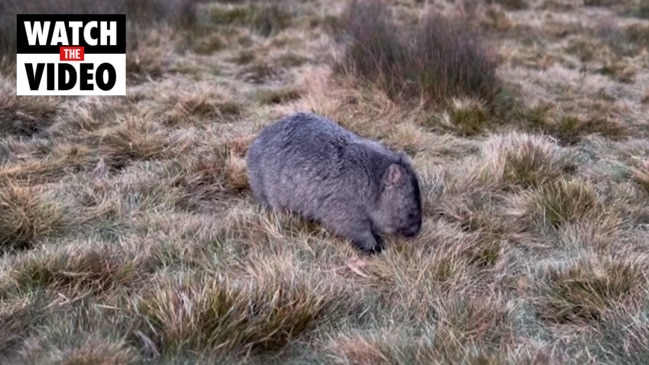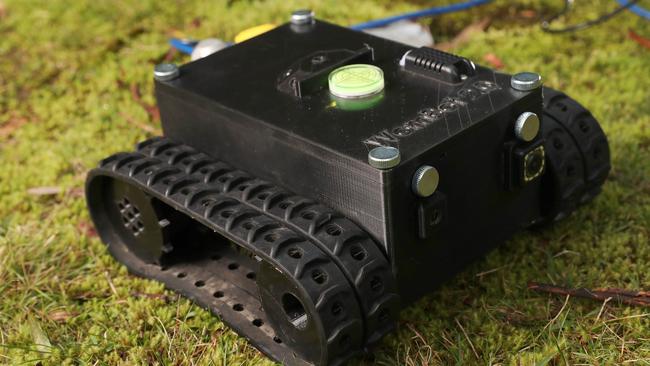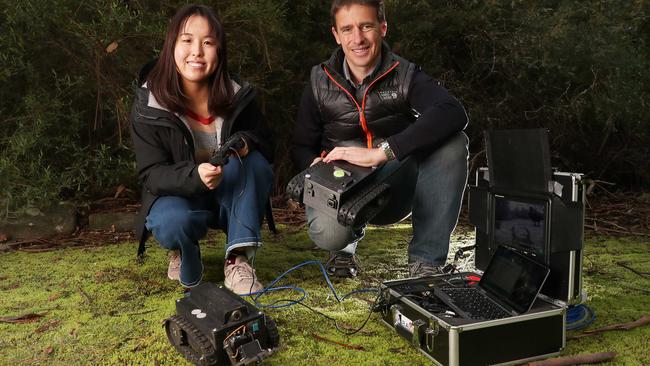‘WomBots’ burrow in for important spy mission
Custom-built robots are being dispatched to explore the “hidden underground world” of wombats, with researchers hoping the devices can help solve a major problem for the state’s marsupials.

News
Don't miss out on the headlines from News. Followed categories will be added to My News.
Custom-built robots are being dispatched to explore the “hidden underground world” of wombats, with researchers hoping the devices can gather intelligence on how sarcoptic mange spreads throughout the population.
Researchers at the University of Tasmania (UTAS) and La Trobe University have developed the remote-controlled WomBot to study the labyrinthine networks of wombat burrows.
Wildlife ecology expert Scott Carver said it had cost $50,000 to manufacture two WomBots, the second of which has only been in operation for about a week.
“They are a custom-designed robot that is basically like a little tank that can traverse the complex environment underground that characterises wombat burrows,” Dr Carver said.
“We’ve improved the design of the WomBot to hopefully help us traverse burrows even better than before. It’s got extra tracks on it, it’s a bit more subtle, it’s got slightly higher clearance off the ground, as well. And it’s also slightly lower in terms of total height.”

UTAS’s School of Biological Sciences has been conducting field work at Musselroe Wind Farm in the north-eastern tip of the state, sending the original robot into burrows, where it’s analysed their environmental conditions and subsequently produced estimates of how long mange mites can survive and how this might affect transmission among wombats.
It’s believed mange spreads when wombats move between burrows – which they do regularly.
“It’s such a fascinating world underground that wombats have,” Dr Carver said. “And it’s such an exciting pure discovery whenever you send a WomBot down a wombat burrow to see what lies underneath.”
Sarcoptic mange causes significant health impacts for wombats and has affected them since it was introduced by Europeans and their pets during colonisation.
The WomBots are set to be deployed as part of a new research project in the coming months, led by UTAS zoology Honours student Reika Takeuchi.
“The plan with (Ms Takeuchi’s) project is to go around different sites in Tasmania,” Dr Carver said. “And that’s because we see differences in mange disease impacting wombats in different locations around the state.”

“We tend to see more mange in wombats in lower lying, more agricultural, wetter areas. And we see less in higher elevation areas and a bit less in dryer areas.”
Dr Carver said if the WomBots can determine where and how mange is being spread among wombats, it will lead to more targeted disease management efforts.
robert.inglis@news.com.au



